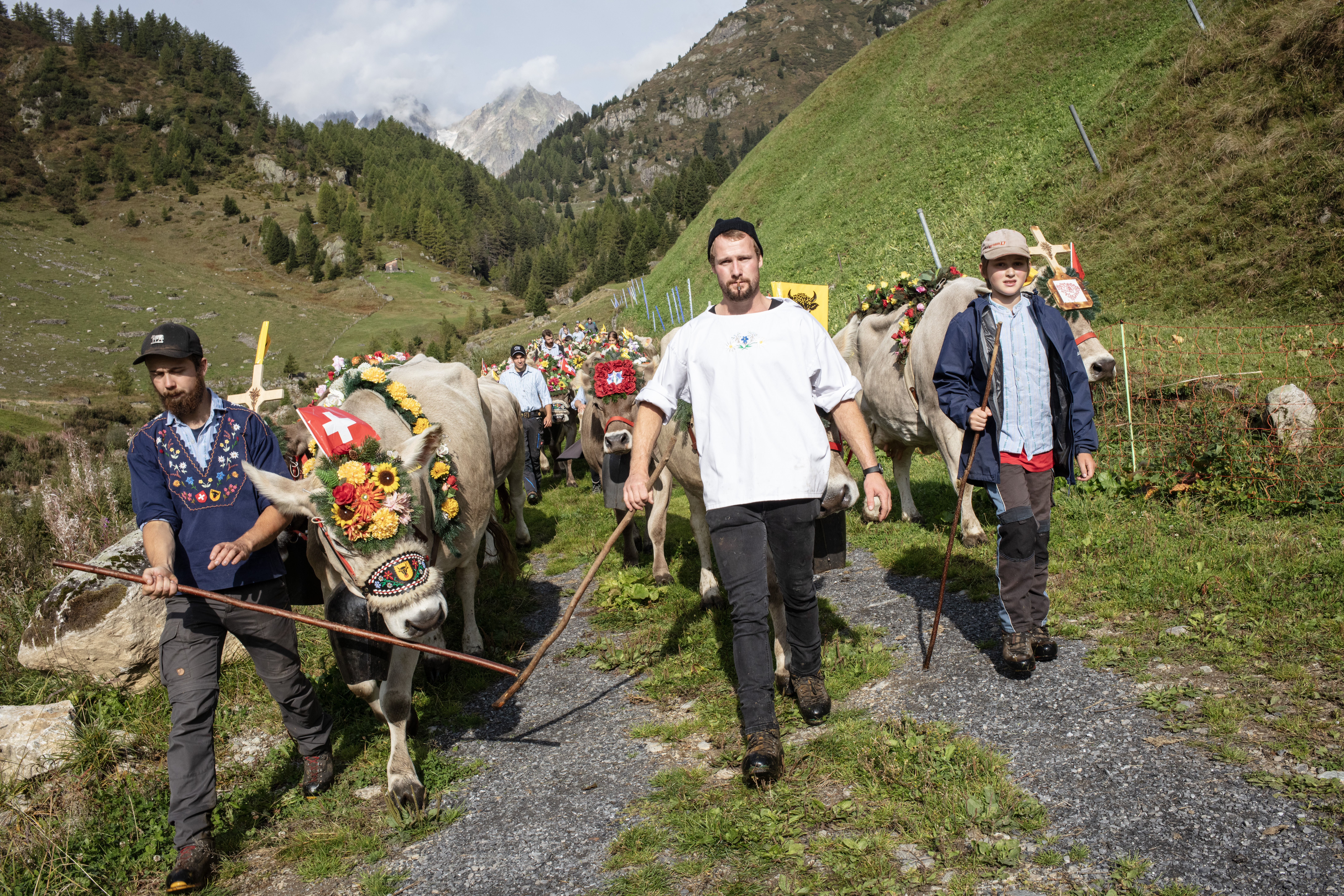
Recently discovered fungus castrates male spruce flowers

Out on a midday walk, a researcher from the Swiss Federal Institute for Forest, Snow and Landscape Research (WSL) chanced upon not only a new species of fungus but a new genus.
WSL fungi expert Andrin Gross made the discovery virtually on the doorstep of his office in 2018: he saw small, grey-beige cupules on the male flowers of a Himalayan spruce in the research institute’s garden, according to a WSL statementExternal link on Wednesday. The researchers named the species Microstrobilinia castrans and have now presented it in the journal Mycological Progress.
+ How to become a mushroom expert
The WSL fungi team conducted an extensive search in worldwide fungal archives and genetic databases, which did not bring any similar fungi to light. It then became clear they were dealing with not only a new species of fungus, but also a new genus (a taxonomic category superior to species).
“It’s rare to discover a new fungal genus in Switzerland or even in Europe,” said WSL researcher Ludwig Beenken, who specialises in small fungi and is first author of the publication.
The species name castrans indicates the unusual way of life of the fungus: it decomposes the tissue of the male flowers and thus gets hold of the nutritious pollen. It doesn’t occur on other parts of the trees.
After the initial find on the Himalayan spruce, the WSL fungi experts launched a search, with volunteers also helping. “I even searched the spruces along the way during my hiking holidays,” said Beenken, who works at the WSL advisory service Forest Conservation Switzerland.
The search operation has now detected the fungus at around 130 sites, both on planted Himalayan spruce and Serbian spruce in settlement areas and on native spruce in forest pastures and mountain forests in the Jura, the Alps and the Black Forest. It has not been found on other spruce species so far.

Mysterious origins
Researchers are still puzzling over the origin of Microstrobilinia castrans, which belongs to the tubular fungi, a large group of fungi that also includes moulds, morels and truffles.
Some people assume it had simply been overlooked. Beenken, however, suspects that it was introduced with park trees at some point. The main reason he gives is that in the past 200 years, mushrooms have been searched for so assiduously in Europe that such a conspicuous, relatively large cup fungus would hardly have remained undiscovered.
Although the fungus feeds on spruce pollen and destroys the male flowers, it doesn’t currently pose a threat to the trees. Nevertheless, the researchers will keep an eye on the fungus. After all, they said, “you never know if a fungus will suddenly cause bigger problems, for example if it spreads more widely with global warming”.

More
Good mushroom harvest results in poisoning boom

In compliance with the JTI standards
More: SWI swissinfo.ch certified by the Journalism Trust Initiative






























You can find an overview of ongoing debates with our journalists here . Please join us!
If you want to start a conversation about a topic raised in this article or want to report factual errors, email us at english@swissinfo.ch.